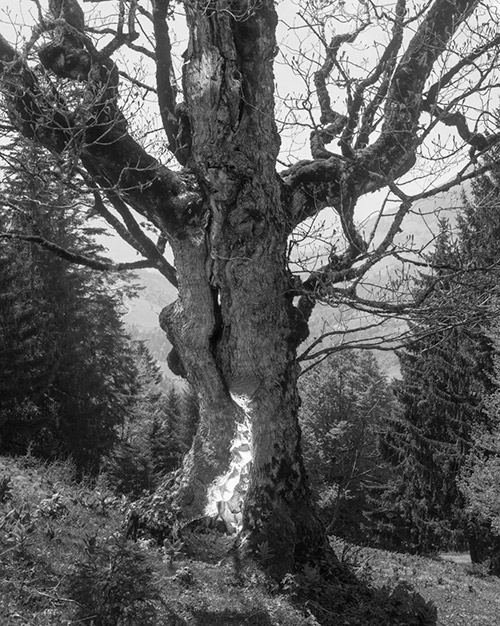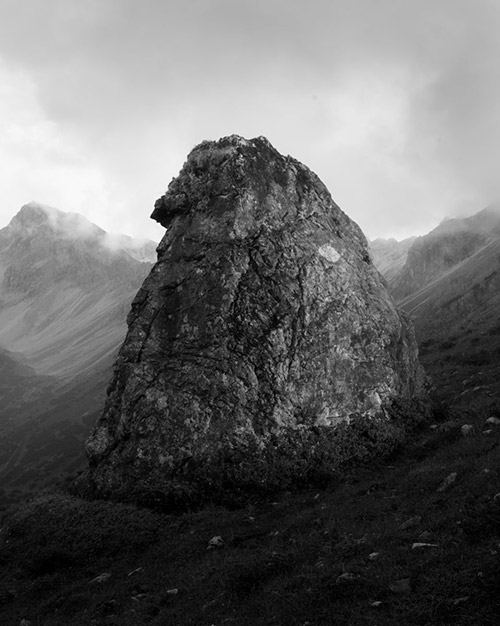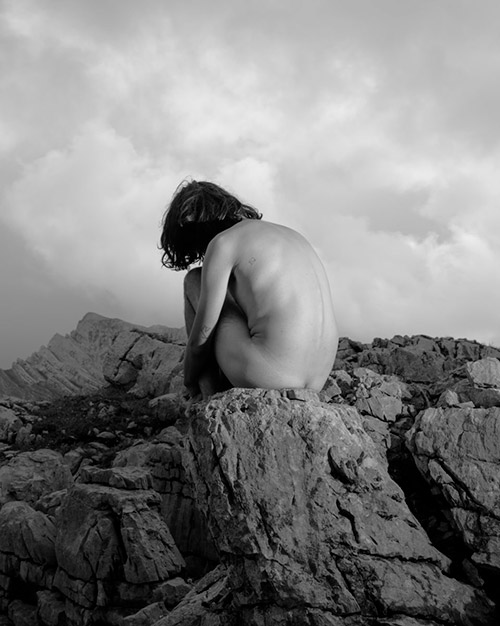featured artist
Rick van der Klooster — Portraits
The first time I really got interested in pursuing photography on an artistic level was when I encountered the New Topographic movement. What attracted me most about the movement was the lack of people in the photographs, empty man-made landscapes without the people inhabiting the landscape. However, over the course of my photography study people slowly started to appear in my photographs. It was only until an artist talk from Cristina de Middel that I realized how human figures and faces could enrich my work. She said something about using people to convey emotion in a photograph that made me want to experiment with portraits of people.
My graduation project ‘The Day the Birds stopped Singing’ was the perfect project to experiment with portraits. Before that I was working on my ongoing project ‘A Conversation between the Mountain and the River’, which had a different title then and I struggled with creating photographs that strongly suggest and/or embody a feeling or emotion. So for my graduation project I started to play with putting people in front of the lens and discovered how the act of taking a portrait is like a dance between the photographer and the one portrayed. Because my portraits are mostly staged there is something performative about the process of taking the photograph. My subjects know it’s not really about them, but about the underlying theme and narrative of the project so they start asking what they should wear and how and where they should look. Most of the time I have a clear idea about how the portrait should look, but the factor of another human being always alters the result, which I really like. I don’t work in a documentary way and I am totally aware that my photographs are subjective and by putting the camera on a tripod, putting my subject right in the middle exposed with a bright flash I hope to make this clear to the reader.
During my graduation project I also photographed birds in quite the same way as people. First I chose a landscape where I would like to portray the subject, then I decided which time of day fits the idea of the photograph best and only then did I set up my camera and lights. The only difference between the people and birds in my photographs is that I promised my friends I would treat them to lunch or dinner afterwards- and with the birds I throw bird food on the spot I want to photograph them. This made me think about what a portrait is in itself. Is it only considered a portrait if the subject is human? Just like the new topographics thought about what a landscape in photography is, I like to think about what a photographic portrait is or could be. If you google ‘portrait photography’ you get page after page with headshots of humans and the occasional cat, dog or horse. While I understand the need for different genres to make things organized I think there is also a downside to only consider it a portrait when the subject is a conscious being.
When I told my girlfriend about the feature in your magazine she asked:”But you’re not really a portrait photographer, right?”. I think I am. Only it doesn’t matter if you’re a rock, tree, bird or human- I’ll still consider my photographs portraits most of the time. For example in ‘A Conversation between the Mountain and the River’ I took a photograph of a small pine tree that is bent at the base of his trunk. Later in his life he grew upright again, but it’s clear the pine tree had a rough start. The photograph is taken in the exact same way I take photographs of humans. In this same project there is a photograph of a person sitting bent over on a rock, they’re both deadpan portraits made to convey something about themes like grief, transience and our relation to nature. I sometimes think a photograph of a person feels more like a landscape than a photograph of a mountain.
By photographing unconscious subjects in the same way as I photograph people (and combine them later in a book or sequence on the wall) I hope to inspire the reader to look at the trees, rocks, mountains, animals and rivers as if they were photographs of people.
Growing up on a farm in Zeeland, exposed to frequent loss of life in my family and surrounded by an always rumbling sea that proved its dangerous existence, I understood how transient and fragile our lives are from a very early age.
So naturally themes like precarity, transience and nature play a big role in my life and artistic practice. Working mostly with a camera I make black and white photographs about these themes, focusing on emotion and ambiance. The interesting thing about photography for me is that I take from the existing world and transform it into two-dimensional planes where a bright flash and monochrome tones convey symbols and metaphors that provokes inner reflection. For me the work exists within the boundaries of my themes, but challenges the viewers own experiences and I think that is where something magical happens between the photograph and the one who’s reading it.
For more information, visit: www.rickvanderklooster.com
Interview with Rick van der Klooster here


















